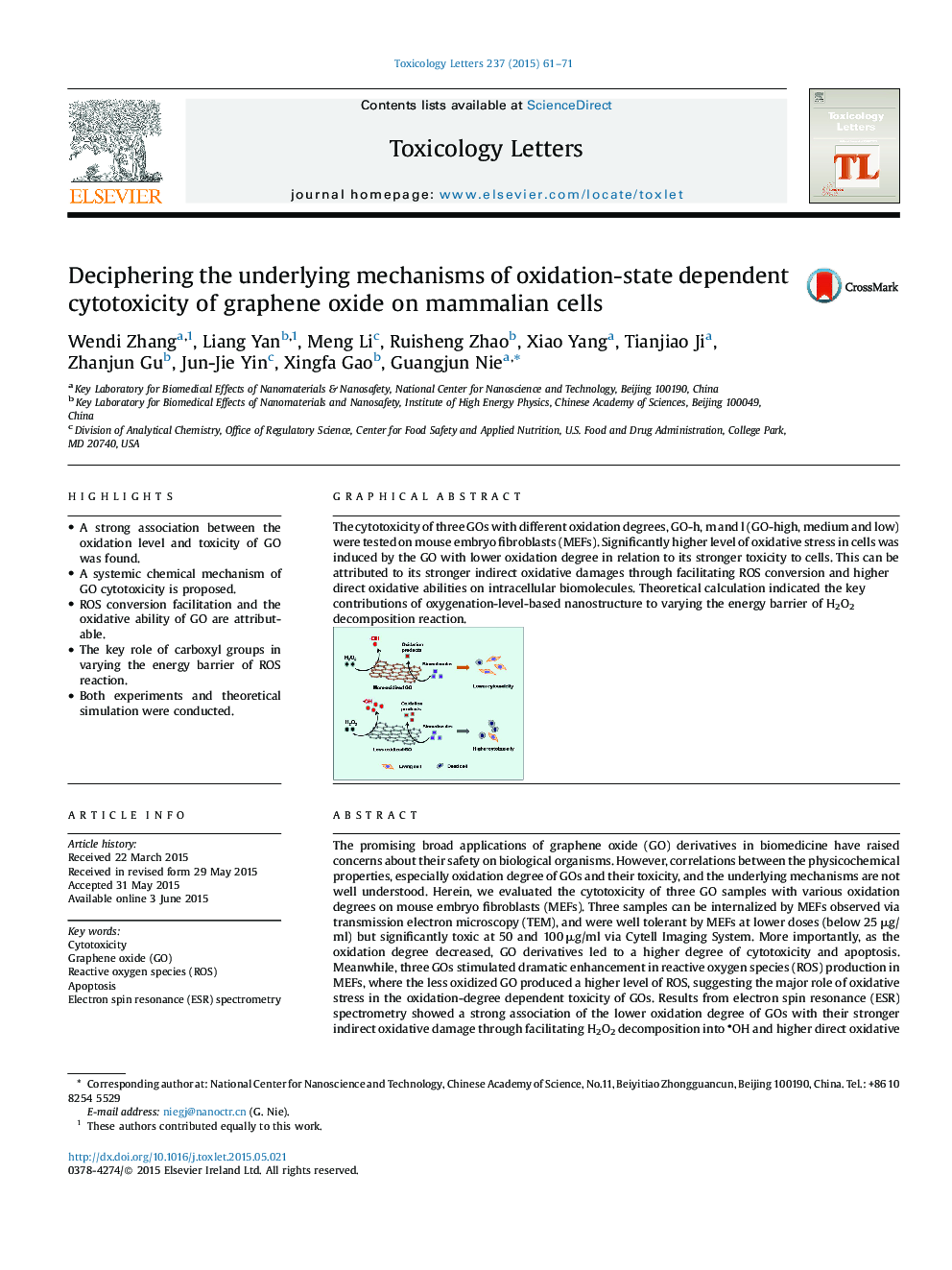| کد مقاله | کد نشریه | سال انتشار | مقاله انگلیسی | نسخه تمام متن |
|---|---|---|---|---|
| 2598624 | 1133141 | 2015 | 11 صفحه PDF | دانلود رایگان |
• A strong association between the oxidation level and toxicity of GO was found.
• A systemic chemical mechanism of GO cytotoxicity is proposed.
• ROS conversion facilitation and the oxidative ability of GO are attributable.
• The key role of carboxyl groups in varying the energy barrier of ROS reaction.
• Both experiments and theoretical simulation were conducted.
The promising broad applications of graphene oxide (GO) derivatives in biomedicine have raised concerns about their safety on biological organisms. However, correlations between the physicochemical properties, especially oxidation degree of GOs and their toxicity, and the underlying mechanisms are not well understood. Herein, we evaluated the cytotoxicity of three GO samples with various oxidation degrees on mouse embryo fibroblasts (MEFs). Three samples can be internalized by MEFs observed via transmission electron microscopy (TEM), and were well tolerant by MEFs at lower doses (below 25 μg/ml) but significantly toxic at 50 and 100 μg/ml via Cytell Imaging System. More importantly, as the oxidation degree decreased, GO derivatives led to a higher degree of cytotoxicity and apoptosis. Meanwhile, three GOs stimulated dramatic enhancement in reactive oxygen species (ROS) production in MEFs, where the less oxidized GO produced a higher level of ROS, suggesting the major role of oxidative stress in the oxidation-degree dependent toxicity of GOs. Results from electron spin resonance (ESR) spectrometry showed a strong association of the lower oxidation degree of GOs with their stronger indirect oxidative damage through facilitating H2O2 decomposition into OH and higher direct oxidative abilities on cells. The theoretical simulation revealed the key contributions of carboxyl groups and aromatic domain size of nanosheets to varying the energy barrier of H2O2 decomposition reaction. These systematic explorations in the chemical mechanisms unravel the key physicochemical properties that would lead to the diverse toxic profiles of the GO nanosheets with different oxygenation levels, and offer us new clues in the molecular design of carbon nanomaterials for their safe applications in biomedicine.
Graphical AbstractThe cytotoxicity of three GOs with different oxidation degrees, GO-h, m and l (GO-high, medium and low) were tested on mouse embryo fibroblasts (MEFs). Significantly higher level of oxidative stress in cells was induced by the GO with lower oxidation degree in relation to its stronger toxicity to cells. This can be attributed to its stronger indirect oxidative damages through facilitating ROS conversion and higher direct oxidative abilities on intracellular biomolecules. Theoretical calculation indicated the key contributions of oxygenation-level-based nanostructure to varying the energy barrier of H2O2 decomposition reaction.Figure optionsDownload as PowerPoint slide
Journal: Toxicology Letters - Volume 237, Issue 2, 2 September 2015, Pages 61–71
